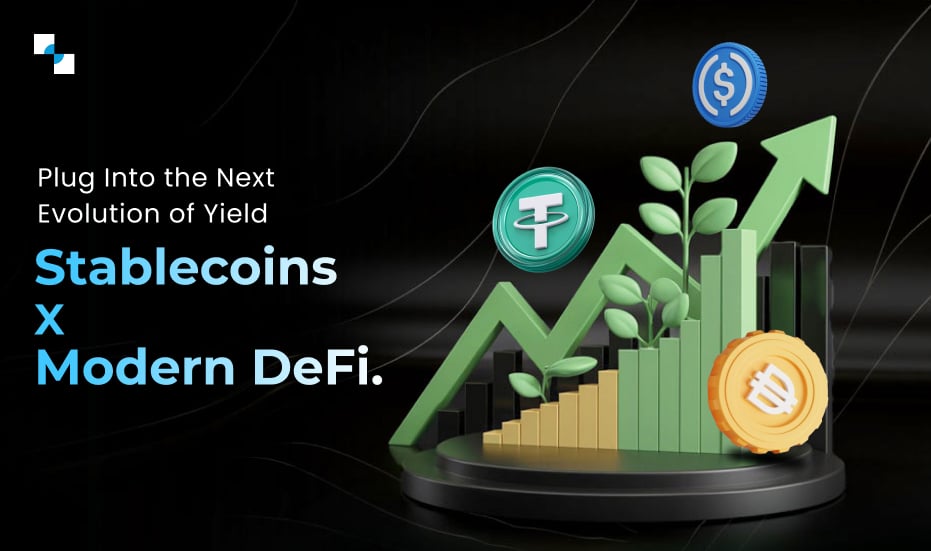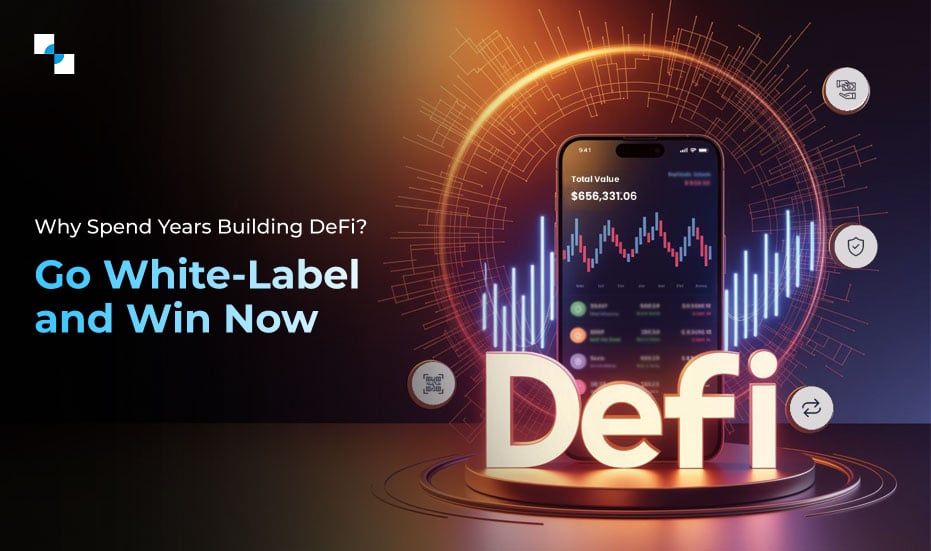The innovative approach of Bitcoin DeFi on the Lightning Network is about combining unique features of decentralized finance, draped in the functionality of the Lightning Network. Such pioneering integration produces faster transactions, with lower fees and improved security for revolutionizing the decentralized financial landscape. It’s a new novel method that leverages the power of Bitcoin and Lightning Network to build DeFi applications that can penetrate and scale further, besides being accessible, seamless, and secure in their financial ecosystems.
This article explores Bitcoin Layer 2 for decentralized finance, the relative merits, and differences as compared to Bitcoin Layer 2 solutions like Liquid and Stacks.
Understanding Bitcoin DeFi
Decentralized finance is an ecosystem of financial applications deployed with the support of blockchain technology, letting users lend and borrow, trade, and invest, but without reliance on central entities or any one central authority. Bitcoin was basically designed to be a peer-to-peer digital currency, so considering this, Bitcoin Layer 2 DeFi opened new pathways for the usage of Bitcoin’s security and liquidity within DeFi applications.
These solutions are apparently working to utilize Layer 2 like Lightning Network or Liquid Network in overcoming the Bitcoin speed and the deficit in scalability. They will allow for faster transactions and reduced fees. This would make DeFi applications accessible to Bitcoin users and maintain the security and decentralization of the underlying Bitcoin network at the same time.
The Role of Layer 2 Solutions
DeFi on Bitcoin Layer 2 sits atop the Bitcoin blockchain, enhancing the scalability and functionality of the project. The solutions process off-chain transactions, thereby not burdening the main blockchain while still securing it.
Key Layer 2 DeFi solutions Bitcoin include:
- Lightning Network: It is a peer-to-peer network that enables lightning-fast low-cost transactions by using payment channels.
- Liquid Network: A sidechain that processes fast transactions and refreshes privacy.
- Stacks Network: A protocol that introduces the idea of smart contracts and decentralized applications to Bitcoin.
Advantages of Leveraging Bitcoin DeFi on Lightning Network
The Lightning Network is a paradigm shifter for Bitcoin DeFi (BTCFi) as it supports instant transactions at virtually no cost. Payment channels between users on the Lightning Network allow for an enormous number of transactions to occur off-chain and eventually settle on the main blockchain. This maximizes the speed of transactions but also reduces costs, making this option much more attractive to many DeFi applications.
DeFi combined with the Lightning Network has several benefits:
1. Scalability and Speed
The biggest issue with the Bitcoin base layer is low transaction throughput. The Lightning Network addresses this by providing off-chain transactions which can facilitate almost instant, very low-fee payments and more complex financial contracts execution. It is a huge scalability advantage for DeFi applications to work smoothly.
2. Reduced Fees
Traditional Bitcoin transactions can be expensive, especially during a period of network congestion. The off-chain nature of the Lightning Network means that the cost of associated fees in DeFi activities is significantly reduced and therefore increases their accessibility and affordability for users.
3. Programmability and Smart Contracts
While the underlying layer of Bitcoin has little smart contract functionality, much greater programmability can be achieved using Hash Time-Locked Contracts (HTLCs) in the Lightning Network. It would enable the construction of complex, decentralized exchanges, lending protocols, and synthetic asset platforms.
4. Interoperability with Bitcoin
Bitcoin DeFi applications sit on top of the Lightning Network, thus ensuring a very tight connection to the underlying Bitcoin blockchain. Such interoperability could be ensured by seamless movement between the DeFi ecosystem and the greater Bitcoin network, focusing on its prime security and liquidity.
Comparison with Other Layer 2 Solutions
1. Bitcoin DeFi on Liquid Network
Liquid Network, a sidechain, was developed by Blockstream to allow faster transactions and maintain more confidentiality. Liquid further enables the issuance of new assets, for instance, stablecoins and security tokens, through which they can be used in a wide variety of DeFi applications.
- Faster Transactions: With a block time of just 60 seconds, Liquid confirms transactions much faster than the Bitcoin standard block time of 10 minutes.
- Confidential Transactions: Liquid uses advanced cryptographic techniques to make sure that amounts in a transaction are held private even from third parties.
- Asset issuance: New digital assets, which endow much more liquidity and a wide range of usage opportunities, can be issued on Liquid.
2. DeFi on Stacks Network
The Stacks Network uniquely introduces smart contracts to Bitcoin by its architecture. DeFi on Bitcoin’s Stacks protocol enables developers to create fully secure decentralized applications.
- Smart Contracts: The Stack uses its own programming language named Clarity and makes it possible for developers to write predictable smart contracts that interact with Bitcoin.
- Ecosystem Growth: The Stacks Layer 2 DeFi ecosystem is growing with projects directly pertaining to lending, borrowing, and yield farming directly tied to the value of Bitcoin.

Use Cases of Bitcoin DeFi on the Lightning Network
The Lightning Network has inspired a lot of innovative developments to date, including various DeFi applications.
- DEXs (Decentralized Exchanges)
These platforms allow users to swap cryptocurrencies through lightning-based DEXs like Boltz and Sphinx DEX. This includes various cryptocurrencies such as Bitcoins, Litecoins, and stablecoins all in a decentralised and non-custodial manner. This is all possible due to the functionality of atomic swap, offered by the Lightning Network, facilitating frictionless cross-chain trades in a safe manner.
- Lending and Borrowing
Protocols like Taro and Arowa enable lending and borrowing of Bitcoin and other asset-backed assets on Lightning. In practice, users can earn interest while settling Lightning transactions at the fee network levels.
- Synthetic Assets
Projects such as Sovryn and Liquality established the mechanisms of issuing and trading synthetic assets on the Lightning Network. Consequently, whoever wants can have access to hundreds of financial instruments – stocks, commodities, and fiat money – without any need for intermediaries.
- Payment and Remittances
The first obvious reason for the appeal of the Lightning Network is that the transactions made through it are fast as well as inexpensive. Therefore, PayJoin is one of the methods applied by services such as Strike and other similar services in making seamless global payments through the Lightning Network.
- Asset Management
Platforms allow users to manage their Bitcoin portfolios using automated strategies, yield farming, and liquidity provision. The non-custodial solution allows one to optimize returns while keeping custody of his assets.
- Asset Issuance
Bitcoin Layer 2 protocols would allow the issuance of tokenized assets such as stablecoins, synthetic commodities, and wrapped tokens. These assets would enjoy all the security properties of Bitcoin but would be used for much more sophisticated financial instruments.
- Atomic Swaps
Hash Time-Locked Contracts enable cross-chain trading and trustless exchange between Bitcoin and other crypto assets on-chain without any intermediaries.
- DAOs
Decentralized Autonomous Organizations on Bitcoin Layer 2 enable communities to self-govern, manage their treasuries, and make decisions together by automating them on smart contracts.
The Future of Bitcoin DeFi
Decentralized finance Bitcoin layer 2 scaling solution such as the Lightning Network brings a big change in the blockchain world. As layer 2 protocols are becoming more popular in the current times, we expect to see:
- Even more innovation and diversity in DeFi apps built on Bitcoin’s Layer 2
- Intensified interoperability between Bitcoin DeFi and the overall crypto landscape
- Better experience for users and reduced access for non-technical users
- Increased regulatory compliance and the rise of compliant DeFi protocols
- Continue growth in total value and liquidity in the Bitcoin DeFi market
Conclusion
Bitcoin DeFi on the Lightning Network and other Layer 2 solutions are profoundly improving the user experience with faster, cheaper applications that utilize strong security of Bitcoin. Liquid and Stacks are improving the usability of Bitcoin in the DeFi arena.
Antier is on the forefront of his innovative change, as we offer Bitcoin-specific DeFi development, promising to enable any kind of business opportunity with the maximum power of decentralized finance. Join us to discuss viable solutions for your business today!







